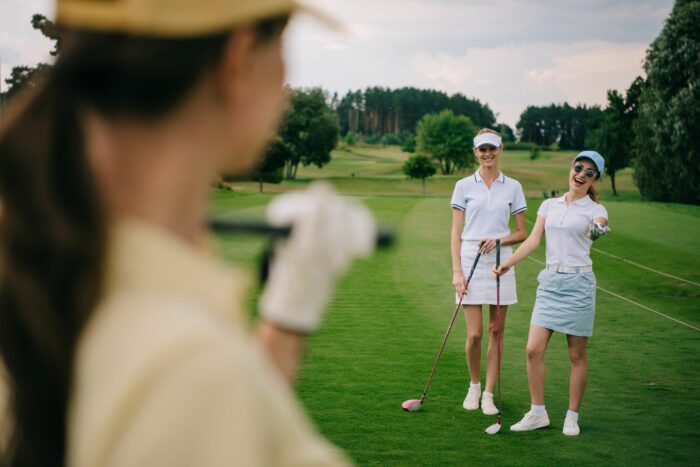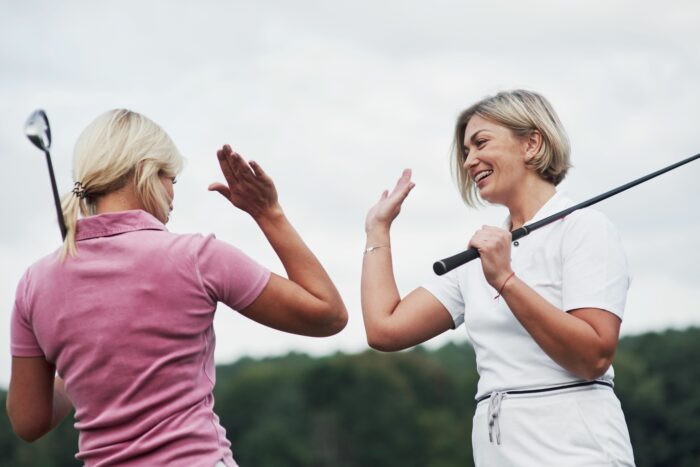A lot done, more to do
While women’s golf participation has surged – in the UK and the US – in the last four years, Kiran Kanwar believes that clubs can still attract and retain many more female golfers.
Earlier this year the National Golf Foundation (NGF) revealed that the number of female golfers in the USA now stands at 6.4 million, thanks partly to a sharp rise between 2020 and 2022.
In fact, from NGF’s 2021 figures, the percentage of women on the course rose to 25 percent, up from 19 percent a decade earlier.
· In 2021, girls made up 35 percent, or 1.1 million, of junior golfers compared to 15 percent in 2000.
· More than a quarter of girl golfers are non-Caucasian, up from just six percent 20 years ago.
The number of female golfers (adult and junior) surpassed six million for three years running for the first time since prior to the financial crisis in 2007. Between 2019 and 2021, the net gain in female golfers was 800,000, a 14 percent increase, meaning that, in the USA, 28.4 percent of golfers are women.
According to womenandgolf.com, in the UK in 2022 participation rose by 265,000 to 5.6 million, the second highest on record, with 20 percent being female.
Twenty percent of adult golfers on full-length courses in Great Britain and Ireland were female in 2022 compared to 15 percent in 2019.

Golf’s growing popularity among women is partly due to the emergence of entertainment venues such as Topgolf, where women now account for roughly 45 percent of all off-course golfers. Women’s organisations in the US, such as Fore the Ladies Inc., have also stepped in to help golf gain traction with emerging demographics.
One 2015 LinkedIn article by Jenn Harris says that she believes the reason women opt out of golf is because most either don’t get into the game or quit the game because people are too snooty at clubs, they feel like no men will want to play golf with them, because they think they won’t be good enough and because it just takes too much time to play the game. Oh and it’s also really expensive.
For her, the positives are: ‘I think about how gorgeous the weather is (and how bad my golf tan is going to be every year – sorry future husband!) I also think about how good it feels to get in my 14,000 steps on my Fitbit or how cool it is to see a red fox or an alligator on the course.’
This suggests demand to play the game is strong among women, but more needs to be done to get more women playing golf.
Solutions to reducing marginalisation and subsequent attrition amongst women golfers may include: 1) retrofitting golf courses to fit the female golfer’s game; 2) researching women’s hitting metrics and preferences to provide a credible basis for golf course architects and equipment manufacturers to develop products; 3) improving the choice, quality and availability of golf equipment, clothing and footwear for women golfers; 4) increasing the presence of women role models at all levels of the sport, industry and governance; and 5) increasing media coverage of women’s golf.
The National Women’s Golf Alliance (NWGA) visits golf courses and facilities and rates them for women-friendliness.
The playability criteria focuses on the needs of the average female golfer. “If there are multiple sets of tees, at least one set must be under 5,000 yards, and the forward tees should all be maintained to the same standard as all the other tees,” golf course designer Bel Jan says. “We look for carries, sharp dog legs, just a number of things architecturally that would help make a golf course strategically appealing but not penal to a variety of women players.”

For the customer service criteria, NWGA evaluators pay attention to how women are treated at the facility, such as if they are welcomed and thanked for their patronage, if tee times are readily available to women and if there are any women in key staff positions. On-course amenities such as ball washers and drinking water stations should be conveniently located to the forward tees and placed in areas that are safe to access. Clean restrooms on the course are considered important, as well. Facility amenities should also be appealing to women. Offering healthful food, not just burgers and brats, and a selection of women’s apparel and equipment in the pro shop, reflects positively toward certification. Women-specific golf programmes, such as ladies-only events and instruction, are a big plus as well.
A women-friendly club’s golf shop has rental clubs for ladies — right-handed and left-handed sets. As for the on-course bathrooms, fans are changed out and mirrors framed in as part of making the overall appearance of the restrooms cleaner and more presentable. One club it rated highly had plans to convert a par three hole to a par four for the addition of drop areas for ladies and for the construction of two new tee boxes.
LPGA Master instructor and The Golf Business contributor Kiran Kanwar has a PhD in kinesiology (biomechanics and anatomy) and wrote a thesis on causes of golf swing-related injuries. Kiran is also chair of Stanton University’s golf department. Visit her website www.YourGolfGuru.com















Let me tell You a sad story ! There are no comments yet, but You can be first one to comment this article.
Write a comment